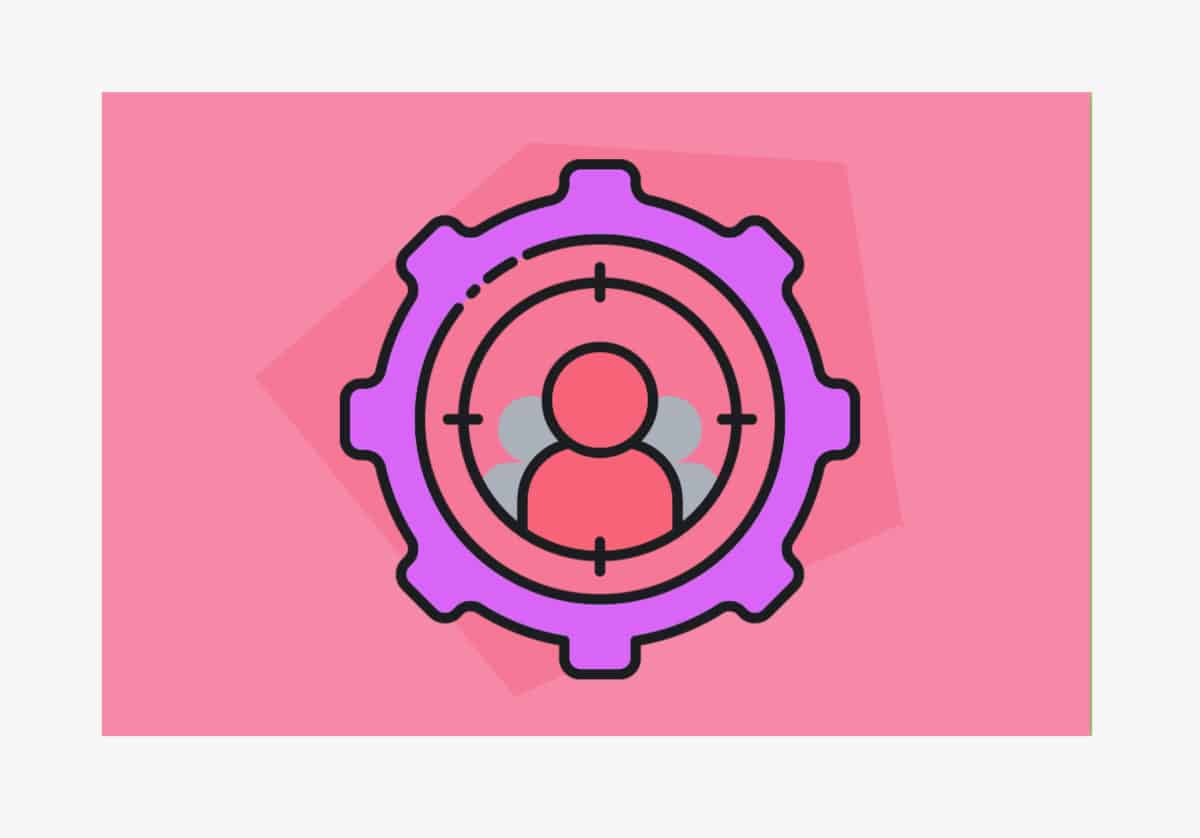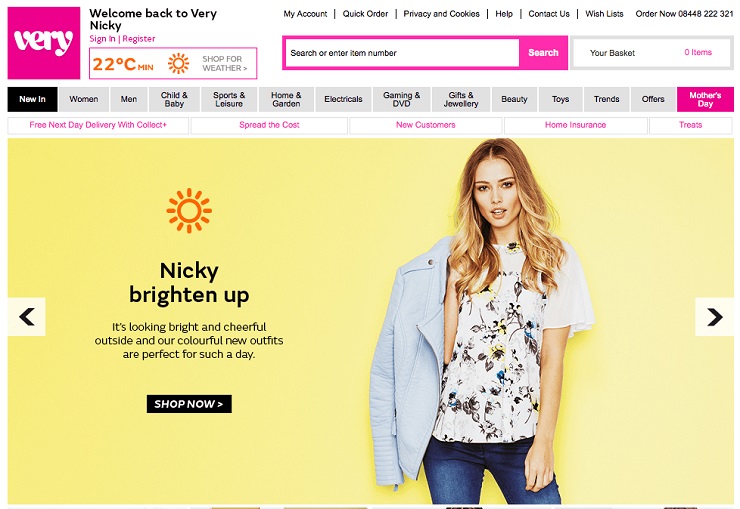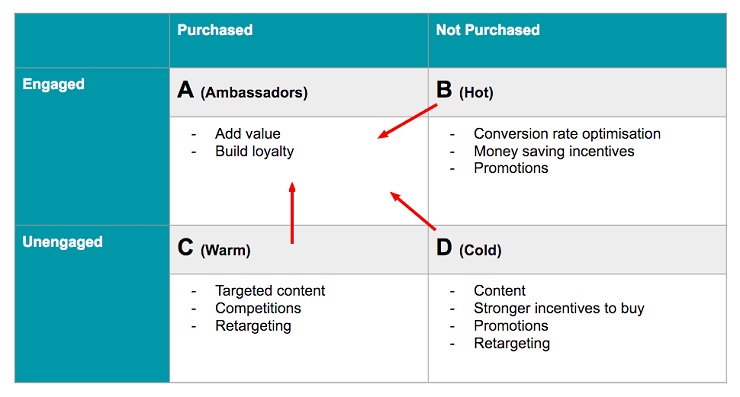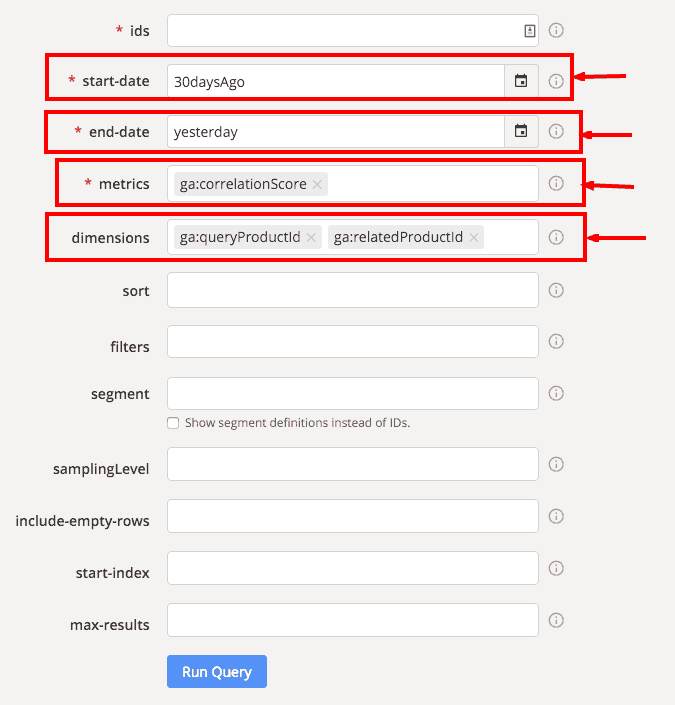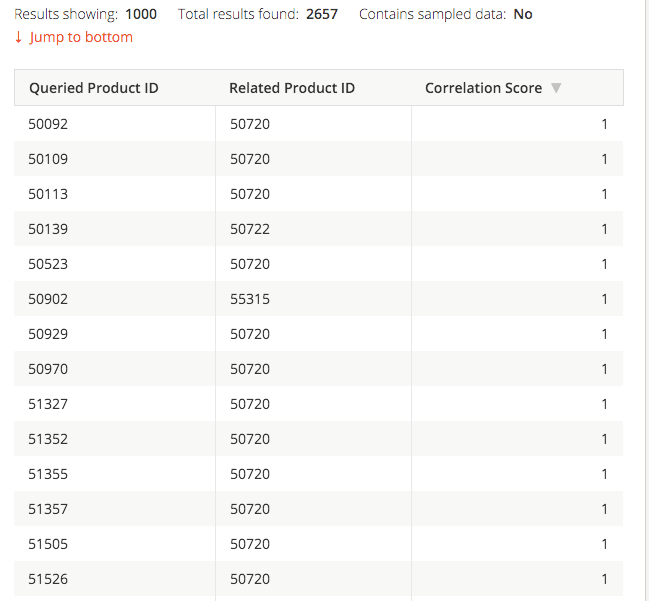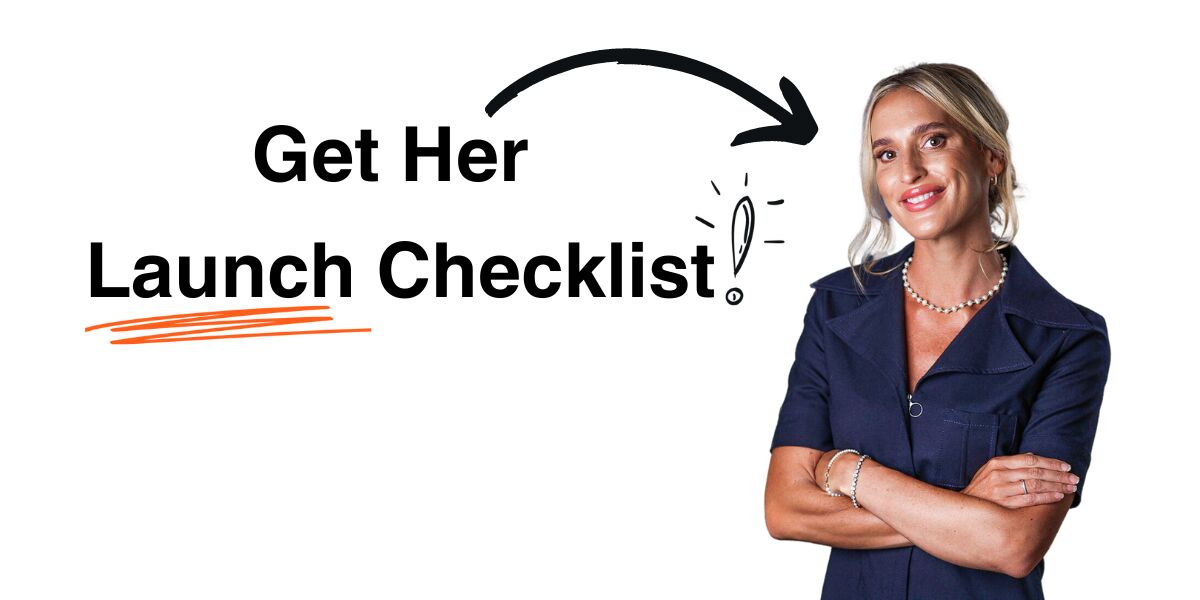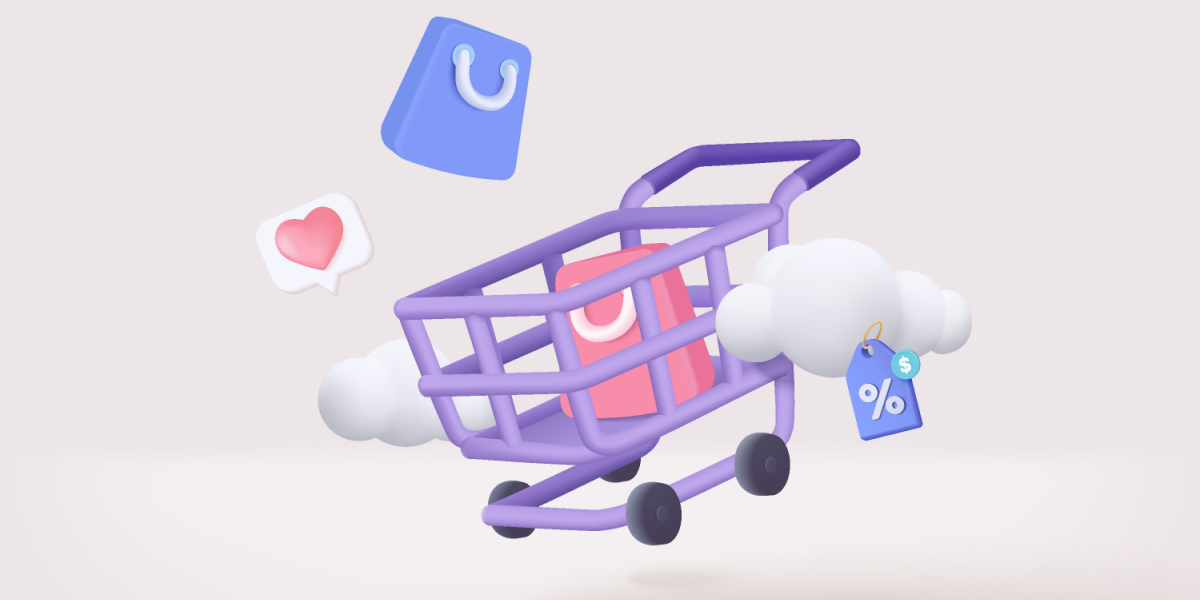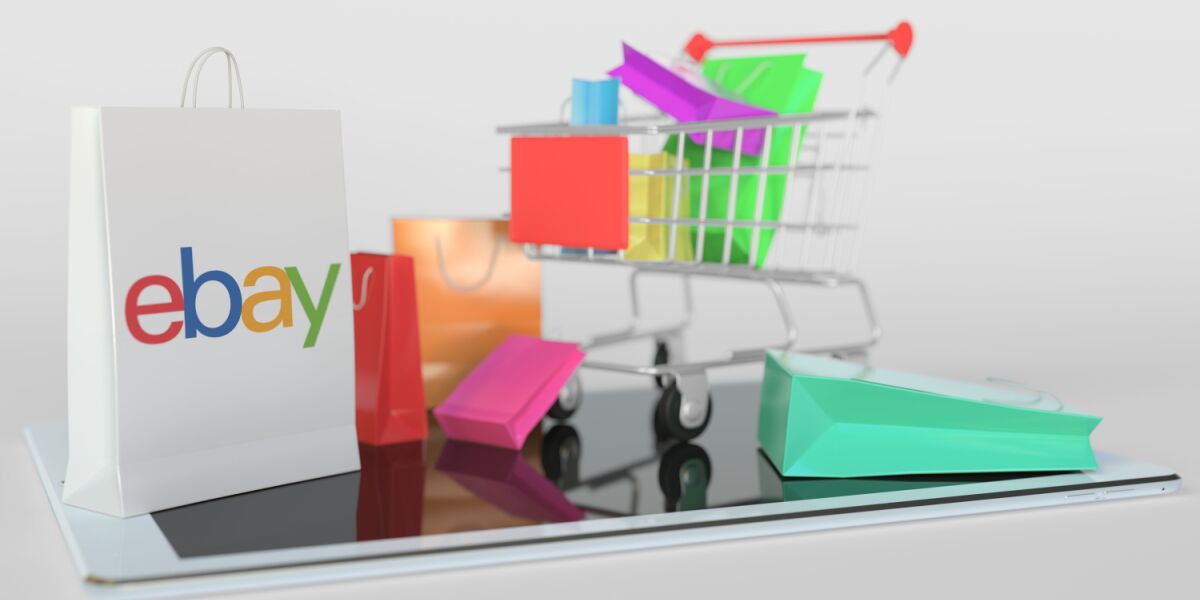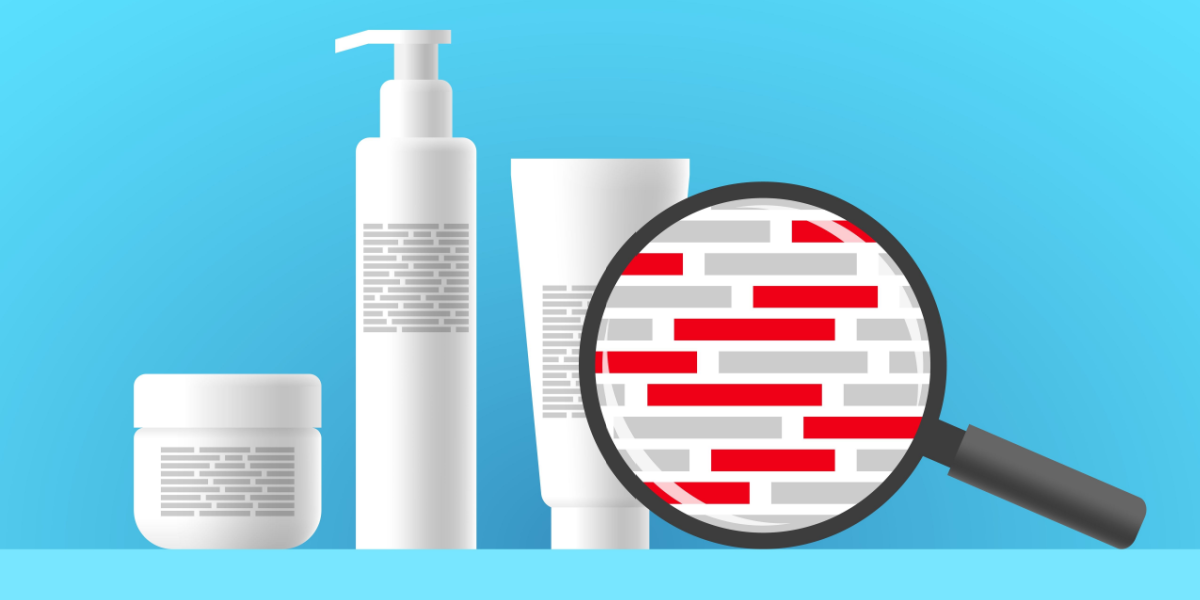Put yourself in the shoes of a brick-and-mortar retail business owner. Imagine how your business could flourish if you knew the name of every single person who entered your shop.
More than that—you knew what their favorite products were, and which other products they’d love. You knew what kinds of deals, offers, and language they responded to. You knew what they’ve bought in the past and when they’d need to shop for it again.
Imagine if, for every person who entered your store, you could create a completely bespoke shopping experience. An experience tailored to their needs, desires and wants, with every step carefully planned to gently nudge them towards making that all important purchase.
But that’s not all. Once they’ve left your store, you could keep in touch—every now and then, drop them a line to make sure things are going smoothly with their purchase. To keep them informed of deals on new products that they might like.
Wouldn’t that be a pretty amazing shop with an incredible service offering? The kind of place that you wouldn’t just buy from once, but would walk away and recommend to your friends?
What has just been described is probably still a long way away for offline retailers. However, for ecommerce businesses, this level of personalization isn’t just achievable, it’s something that more and more consumers are coming to expect. It’s now a prerequisite.
Despite this, getting it right is hard. There’s a plethora of tools claiming to hold the keys to “me-commerce” nirvana. And as other online retailers have come to master the art of personalization, the expectations of the consumers have increased drastically.
In the following article, I’ve teamed up with Rory Truesdale, the head of content at my company Webtise—his expertise made this whole thing possible, thanks Rory!—to give a detailed primer on this topic. We’ll take a look at different types of personalization, and how the very best ecommerce stores are leveraging it to drive conversion rates through the roof. Finally, we’ll cover whether it’s achievable for you (including one killer personalization tactic that is completely free), and what the future holds.
Let’s get personal!
Ecommerce Personalization: What is it About?
This might seem like a strange place to start.
Of course you know what personalization is—it’s giving people a customized shopping experience based on their interests, buying behavior, demographics and psychographics…right? Well, that’s true, but it’s a little bit like saying the sun is just a big ball of fire in the sky. There’s a lot more to it than that.
When you start thinking about how many types of personalization there are, it becomes clear just how big the minefield is that we’re about to start tentatively feeling our way through.
There’s navigational personalization, predictive personalization, personalization based on third-party data, database segmentation, personalized subject lines, personalized content served based on interests…*takes a breath*…real time offers, contextual messaging, location based messaging, dynamic remarketing and more.
You get the idea. So let’s take a look at some of the key types with a brief summary of each:
Different types of ecommerce personalization:
Navigational:
Based on browsing behavior and purchase history, you can customize how the customer navigates an ecommerce website. Let’s use the example of an online fashion retailer where a logged in shopper has accessed their account after have recently been browsing party dresses, but without actually buying one.
The next time that person shows up, it’s possible to have the party dress category prioritized in terms of how it appears on the website, making them more likely to click through and buy. Want to know what makes this concept even more powerful? User ID tracking. This means you can use the browsing behavior of logged in users across their devices to personalize navigation for them. Yep…#MindBlown
Predictive Recommendations:
If you like this… Based on the buying behavior of other users, recommendation engines can predict products that a person might buy in the future. These can then be presented to them through email campaigns, on ecommerce sites, or transactional apps. You’ve definitely experienced this through Amazon, which lands 30% of its sales via recommendations.
Third-Party Data:
This is when you go to an outside vendor to purchase data about a particular audience. Using third-party data is great for serving ads to the right people, in the right place, at the right time. While there are a number of data providers out there, The Wall Street Journal recently published a great article on ad-targeting data providers and why choosing the right one is so important. The key takeaway—if you’re doubling costs by buying and adding data, the performance has to be twice as good.
Database Segmentation:
If you don’t segment your email list then you’re not going to be able to run a successful CRM campaign. Segmentation means sending different chunks of your email list different appeals based on their history.
Let’s say you’re a retailer of beard grooming accessories, and you’re planning to launch a new range of premium scented beard oils. With a nicely segmented email list, you could conjure up a very highly targeted email campaign designed to get those beard-wearing shoppers who haven’t purchased in a while reengaged with your brand.
Database segmentation is all about precision targeting.
This could be segmented by date since last purchase, past purchases (have they bought other scented oils?), average order value (are they likely to invest in your finest concoctions?), and a targeted discount to get them back on board.
The ever-reliable HubSpot has created a long list of possible email segmentation strategies that offers some great insight on this specific topic. Now, if that hasn’t got you stroking your beard in thought, I don’t know what will…
Subject Line Personalization:
Did you know that emails with personalized subject lines have a 26% higher unique open rate than non-personalized emails? It’s a relatively simple thing but could work wonders for improving ROI on your CRM efforts.
Want to Learn How to Start & Grow a Profitable Online Store in 12 weeks? Sign Up for Our FREE Masterclass!
Learn How to Start a Profitable Store in 12 Weeks or Less. Join our FREE Ecommerce Masterclass!
Personalized Content:
Based on buying behavior, demographics, and even third-party integration, you can serve visitors personalized content specifically tailored to encourage them to take a positive action for the business.
This personalized content can be served across a number of channels—email, social media or even as a popup on your ecommerce site to nudge someone towards making a transaction. Take a look at the example below from Qubit:
With dynamic content serving you can ensure that you’re getting the right message to the right audience, in the right place and at the right time. That’s pretty powerful. Right?
Real-Time Offers:
You can offer shoppers different offers in real time based on various factors, such as the source through which they entered and how many times they have visited the site. For example, if you know a repeat customer has entered your site directly, they could be presented with a coupon with an offer to increase their loyalty. Or if a potential customer enters a website through a paid channel, a customized coupon can be used to land that all-important first purchase.
Contextual Messaging:
Don’t just spray and pray with your display advertising. Contextual marketing means you can tailor messages to individuals based on their locations, behavior, or device, delivering ads that are highly relevant to what they are doing at that moment. That could mean ads that change based on local weather, for example.
Dynamic Remarketing:
Use dynamic remarketing to serve people ads they’re going to be most interested in. Showcase the products that they’ve been looking at in the past to try and edge them ever closer to making a purchase.
Now that we know a little bit more about all the opportunities for personalization at our disposal, let’s take a look at who is doing it best and how we can replicate it.
Personalization in Ecommerce: Who’s doing it right?
Very.co.uk
Early in 2015, Shop Direct, a UK-based, multi-brand online retailer, launched fully personalized home pages in what was considered to be a first in the world of ecommerce. Every logged-in customer will get a personalized message welcoming them to the homepage, and a custom selection of products and offers selected algorithmically, seemingly by a giant brain plugged into Very.co.uk, based on their interests.
Source: Internet Retailing
For example, if a customer has just moved into a new house and is more interested in shopping for electrical appliances and home furnishings, that’s what they’ll see. Conversely, if it’s a younger, female shopper accessing the site in the build up to Christmas, they might be presented with the most on-trend party dresses.
Very.co.uk is part of Shop Direct, which is now able to deliver an estimated 3.5 million versions of the website to shoppers. This just shows how much emphasis it has placed on making shopping online with them an incredibly personal experience.
Alex Baldock, Shop Direct group chief executive, said: “We know that relevance wins in retail and right now customers are drowning in a sea of irrelevant choices.” This is Shop Direct taking direct action against irrelevance fatigue—it’s the ecommerce equivalent of any flagship store completely rearranging the layout for every shopper that enters.
Data scientists at Shop Direct have spent years developing complex algorithms that predict customer behavior, pre-empting what they’re most likely to want to buy and reinforcing the “buy now” message with contextual offers.
Source: Shop Direct
With 200 million different affinity scores factoring into this personalization algorithm, it’s easy to see just how personal the Very.co.uk site has become. Within a short time of unleashing the algorithm, Shop Direct reported a significant uptick in conversion and an additional £5 million to its top line.
While very few ecommerce sites have the resources required to develop such a complex tool, what they’ve done has clearly shown the benefits and potential of doing personalization right.
Crew Clothing Company
While the Very.co.uk example focuses on the web-based benefits of personalization, the sames goes for email marketing and CRM activity. One of the finest exponents of personalized email marketing is Crew Clothing Co, a casual clothing brand.
Source: Crew Clothing Company
Until recently, the company was only using a non-segmented, mass email database that just wasn’t performing as well as required. The company needed to take action to increase conversions and increase customer loyalty. That’s when they decided to segment their email database based on purchase history, as well as testing to learn more about the content that different groups would respond to.
The results were phenomenal. Active customers increased by 20%. Open rates increased by 75% and lapsed users fell by 25%.
This is best visualized in the image below (okay…I’m not a graphic designer), in which the objective is to push all email subscribers to segment A. This is something any entrepreneur should strive for with their email:
In an interview with Marketing Week, Crew Clothing Co online marketing manager Sebastian Elia said: “The key to re-engagement was to encourage further interaction with Crew Clothing Co, such as an incentivized purchase, download or click-through […] Many factors influence open rates, including relevance, profile, and preference. However, once we had encouraged a lapsed customer to open the email, we needed to ensure that the content they found motivated them to take action.”
With the technology in place, and a mindset to test everything, Crew Clothing Co were able to develop valuable insight about what motivated their shoppers, and what language they responded to. Was it educational, aspirational or sales-driven?
All this could be factored into highly tailored, personalized email campaigns that were much more likely to increase click through rates and ultimately generate more sales.
Want to Learn How to Start & Grow a Profitable Online Store in 12 weeks? Sign Up for Our FREE Masterclass!
Learn How to Start a Profitable Store in 12 Weeks or Less. Join our FREE Ecommerce Masterclass!
The Webtise Group
At The Webtise Group, the mobile & ecommerce agency I co-founded, one example where this has worked exceptionally well is through using the Facebook Lookalike Audience builder to reach new customers for one of our fashion clients.
For those of you who might not have heard of it, Facebook Lookalike Audiences allow you to input a list of your existing customers (from your email database), then FB will find new people that exhibit similar behavior in terms of the groups they follow and their online activity. You can then promote your brand or content to these people, using the insights you’ve garnered from your existing shoppers.
What’s this got to do with personalization? Well, let’s say you’ve got your email database segmented, and through user testing you’ve discovered that a certain piece of content you’ve created works exceptionally well at re-engaging people with your brand. You could then upload that list of re-engaged customers and ask Facebook to build a lookalike audience around it. You then promote that piece of content to those people and—Bingo!—you know you’re serving a relevant audience a highly tailored piece of content that works well for brand engagement.
As our Head of Content Rory Truesdale explains: “The benefits of serving up personalized content are huge—it’s not just discovering more about user behavior on the site to increase conversions, but about using that logic to drive growth through your other marketing channels.”
With all that said, let’s take some time and look at how you can use personalization whether you’re a budding entrepreneur just starting out on your first venture, or already a success and looking to grow your business.
How You Can Put Ecommerce Personalization Into Action
I bet there’s one question that’s been bugging you throughout this entire article…
Isn’t effective personalization reserved for those with a huge budget?
The answer is simple: no way. As Thomas Wapshott, an ecommerce consultant at Nosto, explains: “Personalization on a budget works with the right technology and a clear budget.”
His firm uses a model that only pays the firm a percentage of the money they help the client make, for example. The right agency will offer pricing that is transparent and scales to the needs of clients, making sure financial cost is offset by extra profit. So, if you do have to invest in a service provider to help with your personalization strategy, there are those that are willing to help businesses with a smaller budget.
But there are also things you can start doing straight away, like segmenting your email database. This is a crucial first step any business can take toward personalization. Most email marketing software providers have really easy ways of letting you segment your database.
- MailChimp – Segmenting Options
- dotmailer – Segmenting Options
- Aweber – Segmenting Options
- FreshMail – Segmentation Guide
In essence, if you’re using a reputable email marketing/CRM service provider, they’ll have options for segmentation. It’s something you can start doing yourself, and not at great additional expense.
And the best way to see if you’re segmentation is working? That would be through testing, of course! Luckily, the above email marketing providers above also offer A/B testing, so you can split test your emails to find out more about the language they use and the offers they respond to.
Top Tip – Litmus has a free tool that lets you test your HTML emails before you use them – give it a go!
Another way to think of it is how much ground do you expect to lose to competitors who do invest in personalization? A recent survey by Experian found that 61% of brands are using personalization to build customer loyalty.
Wapshott continues: “It boils down to the shoppers’ expectation of what the ecommerce world should be offering them. The fact is, with each technological development in the world of online retail, the consumer’s expectations of what their experience should be rises. We are now at a stage where shoppers expect merchants to offer a user experience which is tailored, dynamic, and engaging. If you aren’t offering personalization as part of this experience you can bet one, if not all, of your competitors will be.”
So what if you have zero budget to invest in an ecommerce, non-email, focused personalization technique? Well, here’s my single top tip to give you actionable, data-driven insight into buying behavior on your site. All you need is Google Analytics:
- Log in to your GA account
- Click on the Admin button
- In the View column, click on Ecommerce Settings
- With Ecommerce tracking enabled, click Related Products
- Enable Related Products and click Next step
- Let the magic happen…
You’ve just told Google to start automatically generating a list of related products for your ecommerce site based on transactional data. To get access to this, you need to use the query explorer API (don’t worry…it’s not difficult)—just click here to get started and authorize your site.
Once you’re there and you’ve chosen your site to analyze, you just need to worry about filling out four fields in the list. Just copy what is shown in the below image (the only thing you might want to change is the date range):
Then hit the Run Query button. What you’ll see is a report like the one below. The important thing is to filter the Correlation Score column with 1 at the top. You just do this by clicking the column title:
The reason to filter the list this way is that 1 indicates that every time the product was purchased with another product, it was always the Related Product. It then works backward from there. So if the correlation score is 0.5 it means that when the Queried Product was purchased with another product, 50% of the time it was the Related Product.
What this means is that without any potentially expensive personalization modules, you can start getting making more tailored, personalized “Product Recommendations” through your site. It can even feed into email campaigns, and follow ups with suggestions to buy a suggested product.
—
So while on the surface, personalization might appear like it has the potential to be a significant cost investment, there are very accessible ways to do it, and without it, the repercussions for any business could be huge.
So if you’re looking at investing in personalization solutions for your ecommerce website, think about five key things:
1. What are your competitors doing?
- Are they using personalization extensions?
- Have you subscribed to their newsletter? This might seem counterintuitive, but it means you can learn about any email personalization or content they’re pushing out.
2. Do you have a clear strategy and goal for your personalization?
- What do you want? More revenue? More email newsletter signups? Better click through rates through email? What is your timeframe to make this happen?
3. How are you going to measure its impact (on both bottom and top line)?
- Are you using email testing software? Do you have the correct goals set up in GA to monitor progress?
4. Will automating personalization free up man hours or eliminate manual processes?
- Are resources being invested in generating manual reports on product recommendations or email segmentation that could be done more efficiently when automated? Will the man hours freed pay for the cost of a tool or service?
5. Can you avoid signing a long contract with a provider?
- Negotiate to make sure you’re not committing to anything too long term.
If you can answer those questions, what you can invest in personalization for your ecommerce business will become a lot clearer, as will your strategy for making it happen.
Want to Learn How to Start & Grow a Profitable Online Store in 12 weeks? Sign Up for Our FREE Masterclass!
Learn How to Start a Profitable Store in 12 Weeks or Less. Join our FREE Ecommerce Masterclass!
Future of Ecommerce Personalization
Now that you know about what ecommerce personalization is, how it’s used, who uses it, and how you can justify the cost, it’s time to think about what the future holds.
At the recent Fashion Digital event in London, one message was clear among attending technologists: the message is the medium. What this means is that modern consumers are now, or are at least on the cusp of, expecting consistent, personalized messaging that reaches across all channels, platforms and device types.
So whether you’re scrolling through Facebook on your phone, reading a fashion retailer’s blog post on your laptop, or flicking through a digital magazine on your iPad, there has to be a seamless connection across everything. And this seamless connection will have been created by the ecommerce retailers that are winning at personalization.
One thing’s for sure though—the future’s personal.
Got any questions, or your own tips regarding personalization? Let us know in the comments!
